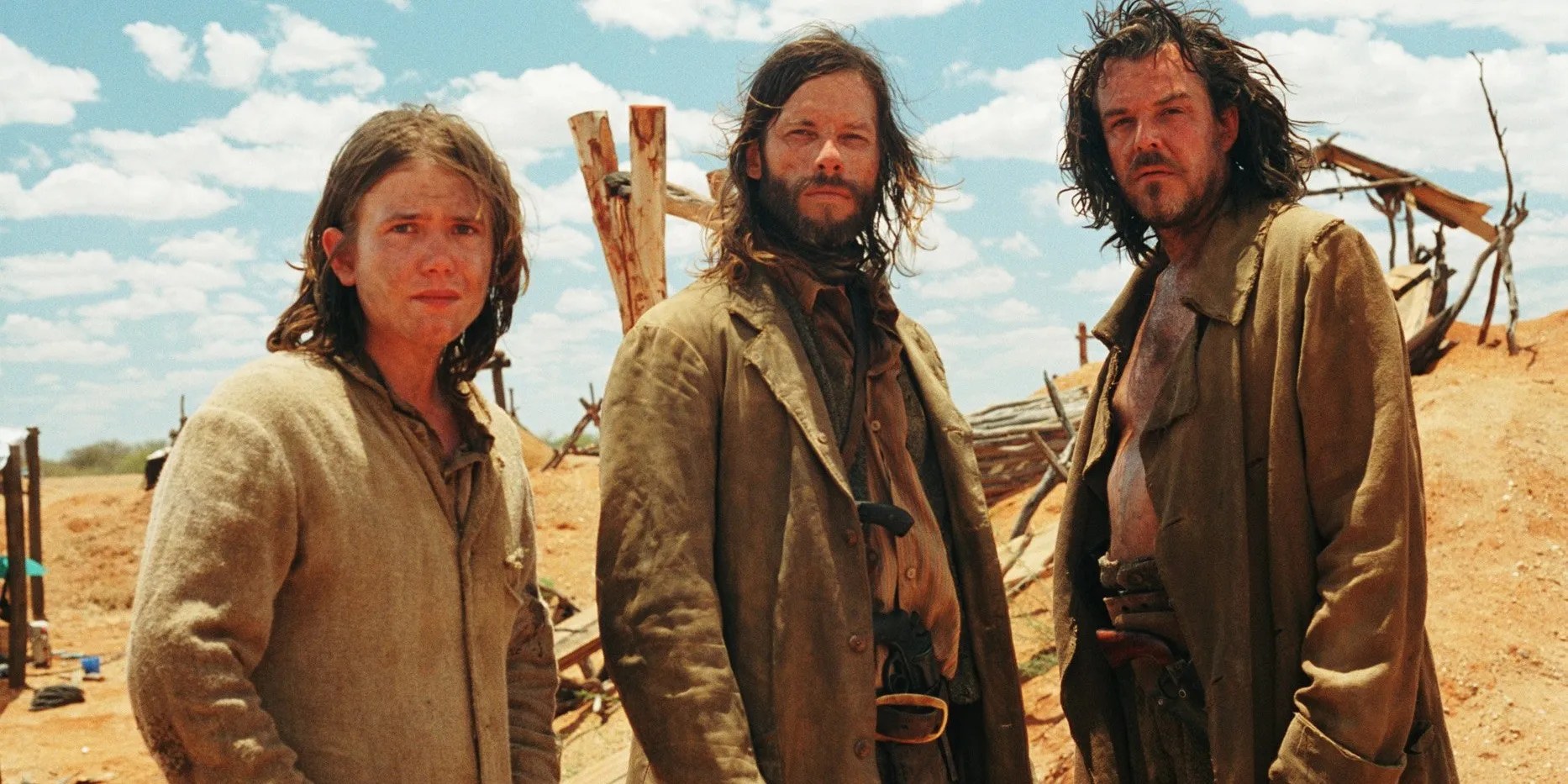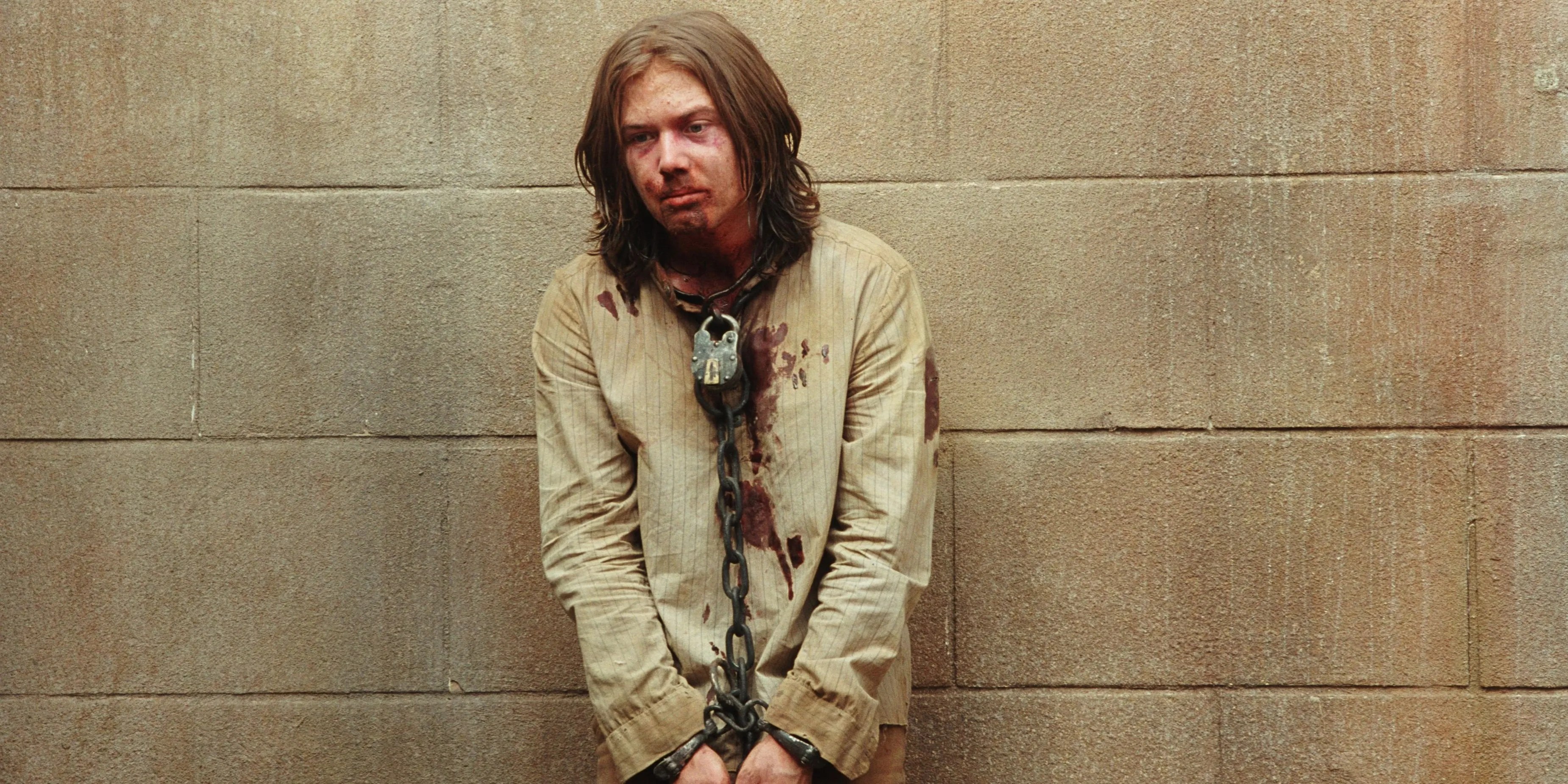The western’s heyday died out over half a century ago, thanks to satirical ribbing by Mel Brooks inBlazing Saddlesand revisionist deconstruction by Robert Altman inMcCabe & Mrs. Miller. But recent movies likeUnforgivenand the Coen brothers’True Gritremake have proven that there’s still room for fresh perspectives in this well-worn, over-analyzed genre. John Hillcoat’s 2005 gemThe Propositionis a prime example of a refreshing take on the western genre, transplanting its tropes into the Australian Outback.
Nick Cave’s screenplay has a classic western setup – a notorious gunslinger is given nine days to bring in his older brother to prevent the execution of his younger brother – but the Outback setting makes it feel entirely new. Hillcoat used the same mirror that American cinema has used to expose its morally gray history to explore the impact of Australia’s own history of racial tensions (another case of white colonizers arriving and declaring themselves to be the superior race). Hillcoat’s Australian take on the western genre is decidedly bleak.The PropositionmakesSergio Leone’s blood-soaked vision of the frontierlook glamorous by comparison.

RELATED:This Brutal Spaghetti Western Is A Must-See For Fans Of Red Dead Redemption 2
Likeany great western director, Hillcoat doesn’t shy away from anything that could be considered controversial. He addresses the brutality of the British Empire by refusing to water down his portrayal of its atrocities. An eerie scene set to the patriotic anthem “Rule, Britannia!” juxtaposes shots of indigenous slaves with Britons singing, “Britons never, never, never shall be slaves.”

An Uncompromising Critique Of The British Empire
An early image of the Union Jack flag flying against a gorgeous landscape shot of a ranch in simmering heat instantly sets the tone of the movie: it’s a western like any other, except Britain is the empirical overlord, not the United States. The lawmen – led by Ray Winstone’s crooked British captain, a classic western villain – are cartoonishly corrupt and oppressive and sadistic. The social commentary inThe Propositionis as on-the-nose as Sergio Corbucci’s spaghetti westerns, but in these grim, ultraviolent circumstances, there’s no room for subtlety. Filmmakers like Hillcoat and Corbucci have cracked the code: lean into unsubtlety. During a torture scene, the Union Jack is covered in blood and wrapped around Winstone’s head.
The contemplative opening credits – with somber, period-specific music and historical photographs (from back when having a photograph of oneself was a big deal) – are jarringly interrupted by loud gunshots. This opening contraststhe nostalgic lens through which people view the pastwith the much harsher realities of history. The unforgiving hellscape that the frontier actually was, mythmaking aside, suddenly comes crashing down. With no music on the soundtrack, the audience is plunged into the middle of a shootout between gang members in hiding and the lawmen on their tail. The impact of every single bullet feels real as visible holes are blasted through the walls. The gunshot sound effects are deafening. From the very first frame of the movie, the viewer is on the edge of their seat.

Cinematographer Benoît Delhomme’s Leone-style Techniscope wide shots are breathtaking. As many times as Hillcoat brings back a classic western trope, he also offers something delightfully subversive or unconventional. The captain’s house has a picket fence and a garden of rosebushes – unmistakable symbols of suburban middle-class existence – juxtaposed against a vast, barren desert wasteland.
Violence Beyond Tarantino
Throughout the movie, Hillcoat indulges in hard-hitting, over-the-top portrayals of violence, but its message is anti-violence.Quentin Tarantino pushes movie violenceas far as it can go and still be fun, but Hillcoat pushes it beyond that point until the fun is gone and the audience feels suitably uncomfortable about watching violent acts of revenge.
In one particularly unsettling sequence, a rapist is dragged out into the street and whipped with a cat-o’-nine-tails. Given the heinous crimes he’s charged with, the audience – and the townspeople – initially want to see him take a beating. It’s akin to the scene inTarantino’sDjango Unchainedin which Django whips the white slaver who previously whipped his wife. But inThe Proposition, this gut-wrenching scene goes on for so long that the revenge fantasy wears off and the brutality becomes difficult to stomach. As the lawman counts his lashes – “38… 39…” – the townspeople watching the whipping just get squeamish. There’s a truly horrific moment in which the kid’s blood is wrung out of the whip.
A Dark Inversion Of A Classic Theme
The common narrative theme ofsticking by family no matter whatgets a dark inversion inThe Propositionas the protagonist (more of an antihero) is tasked with deciding which of his brothers is more deserving of death – and the brother they eventually free is an evil, remorseless monster. Guy Pearce anchors the movie as the put-upon middle child, a classically ice-cool gunslinger in the vein of an Australian Clint Eastwood or Lee Van Cleef. Winstone disappears into his complex role as a bad guy who sees himself as a good guy.The late, great John Hurtgives a truly bonkers supporting performance as an eccentric, hard-drinking bounty hunter.
In addition to writing the script, Cave composed the musical score forThe Propositionwith Warren Ellis. Together, Cave and Ellis put their own unique spin on a classical western score, made up of musical interludes that were reproduced and expanded on the soundtrack album. Ellis provides beautiful violin rhythms that give the movie a musical identity of its own outside the traditional genre framework. With a brutal, uncompromising, fresh take on the well-worn genre,The Propositionhas earned its reputationas one of the greatest westerns of the 21st century.